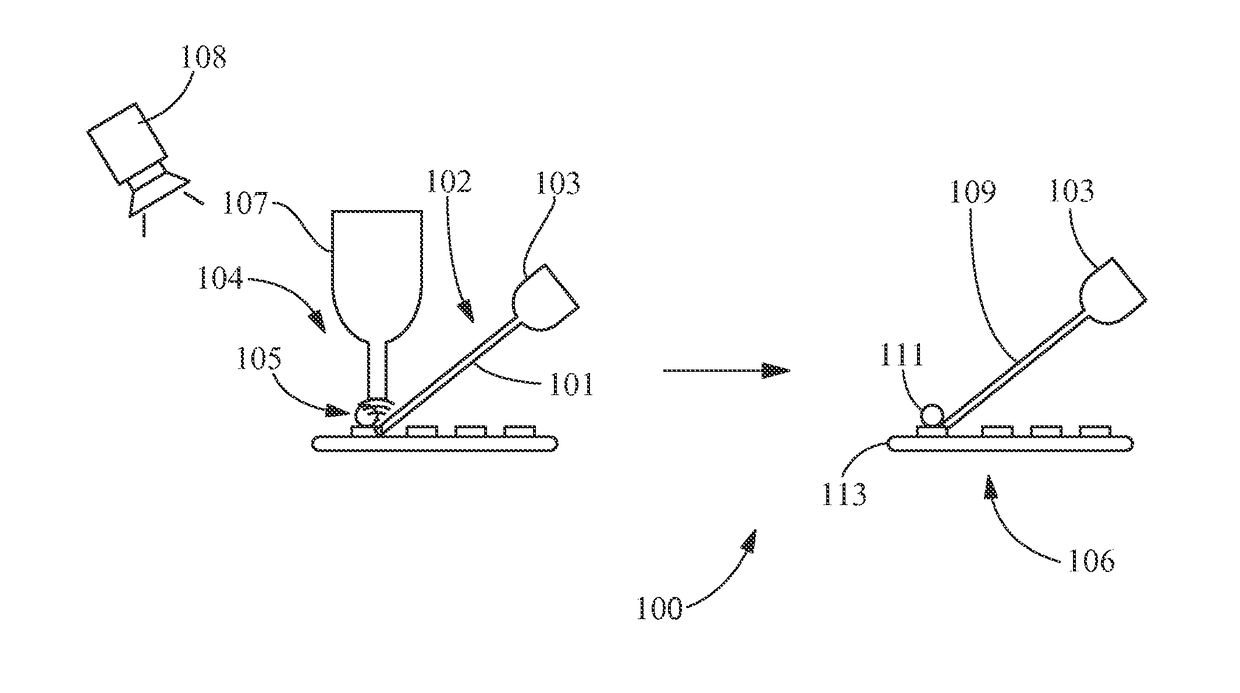Laser soldering process
a laser soldering and process technology, applied in the direction of laser beam welding apparatus, soldering apparatus, etc., can solve the problems of adversely affecting quality, laser soldering has technical complications, and cannot meet the technical requirements of certain applications for soldering
- Summary
- Abstract
- Description
- Claims
- Application Information
AI Technical Summary
Benefits of technology
Problems solved by technology
Method used
Image
Examples
Embodiment Construction
[0012]Provided are laser soldering processes. Embodiments of the present disclosure, for example, in comparison to concepts failing to include one or more of the features disclosed herein may provide one or more of the following benefits, including, but not limited to: i) use of lasers for precise (for example, having tightly-controlled temperatures) and high-quality soldering on materials having dimensions (for example, size, pitch, and / or thickness) as small as 0.05 millimeters; ii) reduce or eliminate uneven heating previously believed to be a feature of laser soldering; iii) reduce or eliminate unintended burning of solder; iv) reduce or eliminate thermal damage to heat-sensitive components during manufacturing (for example, of components that receive thermal damage when exposed to temperatures of greater than 343° C.); v) reduce or eliminate vertical overhang defects in solder joints; vi) allow for more precise soldering; vii) allow laser soldering operation which are devoid of...
PUM
| Property | Measurement | Unit |
|---|---|---|
| Thickness | aaaaa | aaaaa |
| Thickness | aaaaa | aaaaa |
| Length | aaaaa | aaaaa |
Abstract
Description
Claims
Application Information
 Login to View More
Login to View More - R&D
- Intellectual Property
- Life Sciences
- Materials
- Tech Scout
- Unparalleled Data Quality
- Higher Quality Content
- 60% Fewer Hallucinations
Browse by: Latest US Patents, China's latest patents, Technical Efficacy Thesaurus, Application Domain, Technology Topic, Popular Technical Reports.
© 2025 PatSnap. All rights reserved.Legal|Privacy policy|Modern Slavery Act Transparency Statement|Sitemap|About US| Contact US: help@patsnap.com


